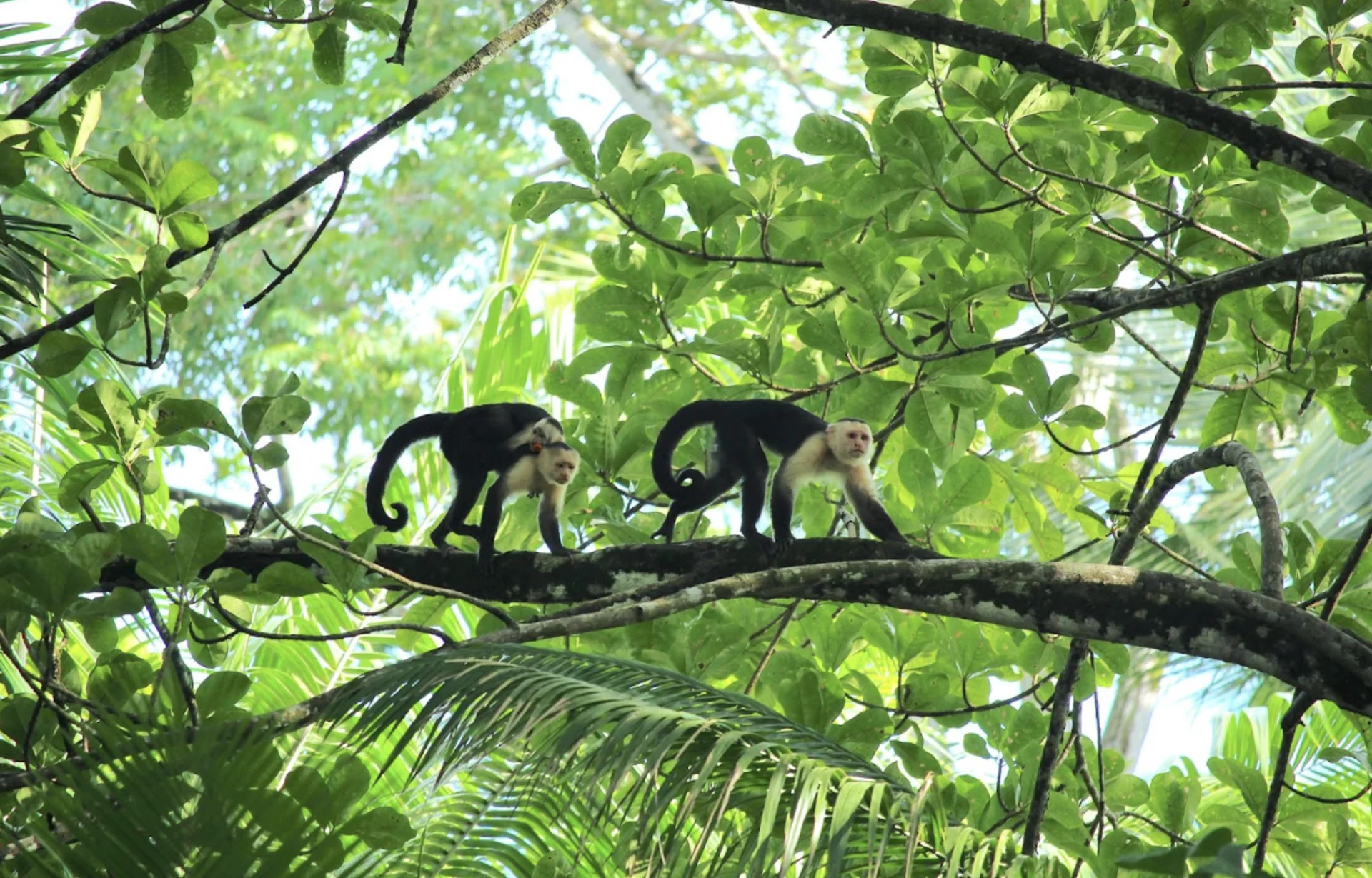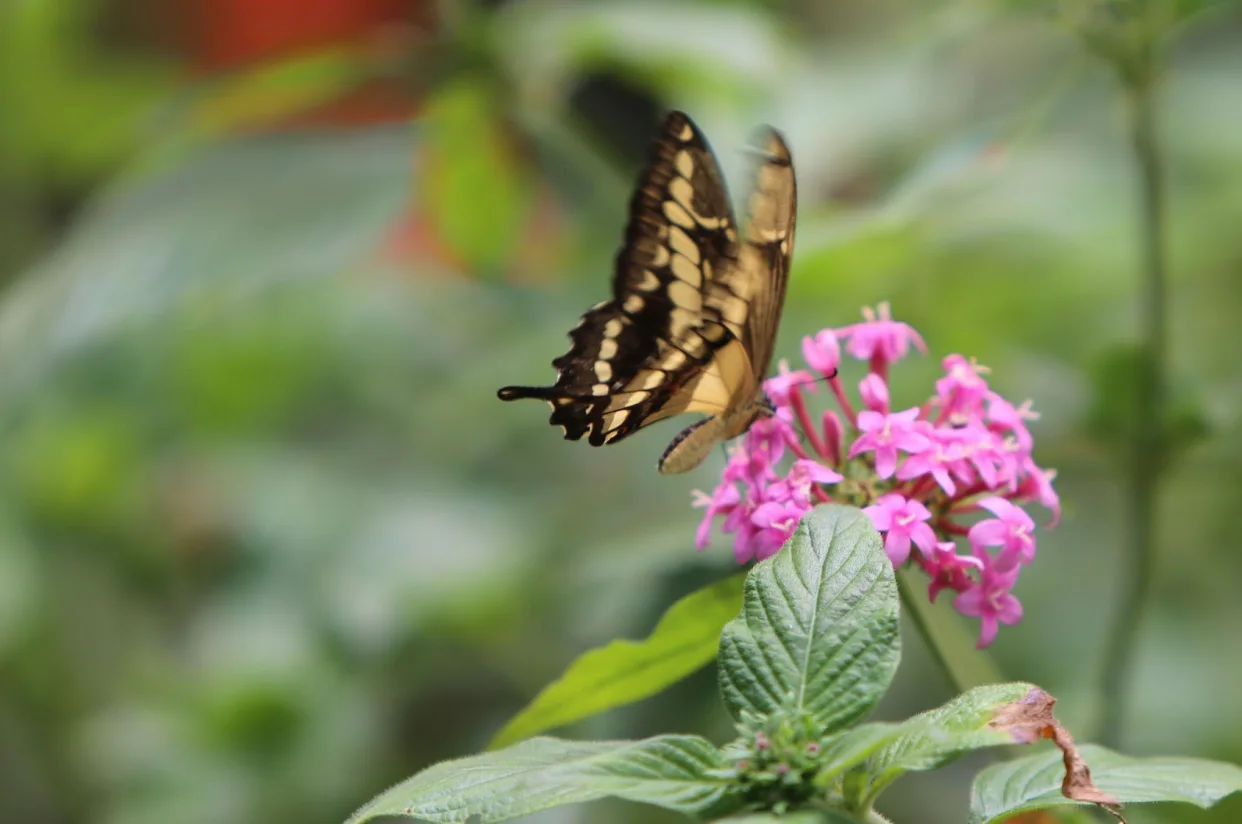
From sloths to scarlet macaws. A journey through Costa Rica's wildlife marvels
Wildlife is a significant part of the Costa Rica experience. It's a paradise for wildlife enthusiasts and home to many animal species—from monkeys to sea turtles, anteaters to jungle cats, and a myriad of rare birds and exotic butterflies. Many of these species are exclusive to this region, making a wildlife-watching adventure here genuinely one-of-a-kind.
Wildlife is a significant part of the Costa Rica experience. It's a paradise for wildlife enthusiasts and home to many animal species—from monkeys to sea turtles, anteaters to jungle cats, and a myriad of rare birds and exotic butterflies. Many of these species are exclusive to this region, making a wildlife-watching adventure here genuinely one-of-a-kind.
But, with so much wildlife, their survival instincts are finely tuned to avoid humans. Going out alone, you might wonder if they're also on vacation. That is why if you want to experience the full scope of everything living in Costa Rica, you need an expert local guide who understands the terrain, knows an animal's behaviour, habits, habitat, and where to find them during the day. That is why companies like Collette have wildlife excursions built into their customizable travel packages, where they find the best guides to accompany small groups on your trip. The thrill of spotting these creatures in their natural habitat is an exceptional experience. Here's a glimpse of what you might encounter in the wild.
Monkeys
Four monkey species call Costa Rica home, outnumbering humans in the region. The Howler Monkey's distinctive call serves as an alarm to alert troops of nearby predators. They wake up early, and their powerful wail could put a Costa Rican rooster out of business. The intelligent White-Faced Capuchin monkeys travel in troops and have become Hollywood favourites. With their agile movements and striking fur, the small Squirrel Monkeys live on the Pacific Coast, while the rare Spider Monkeys display their strength and elegance in remote rainforest areas with a tail that acts like a third arm.
Birds

(Photo credit: Getty Images)
Costa Rica's birds can turn a casual observer into a passionate birder. There are over 900 bird species, each with a dizzying array of colourful plumage. It's the land of toucans, with six species, including the iconic keel-billed toucan (picture Toucan Sam on a Froot Loops cereal box). The iconic sizeable rainbow-coloured bill can do more than turn heads. It can do everything from regulating body temperature to attracting mates and crushing fruit.
Seventeen species of parrots call Costa Rica home. The scarlet macaw is the most famous and largest parrot on the planet, with its colourful and vibrant red, blue, and yellow feathers. Legendary for imitating human voices, the social scarlet macaw uses its loud call to announce its territory, which it shares with a colony of hundreds of its kind.
Of the ten trogon species in Costa Rica, the resplendent quetzal is the crown jewel for many birders. The photogenic male is dressed in glittering emerald-green plumage, and his tail cascades up to 75 centimetres to attract mates.
Sloths

(Photo credit: Getty Images)
Sloths blend into the canopy treetop, so to spot one, you may need the help of a guide. Their green-tinted fur is home to moths, fungi, and algae species that act as camouflage and are said to make them unpalatable to predators. Sloths are mistaken for being lazy, taking up to four hours to travel a mile across the treetops. But this is evolution at work. They put teenagers to shame by sleeping up to 18 hours a day to conserve energy. And out of every mammal, their digestive system is the slowest, taking up to two weeks to digest a leafy-green meal.
Butterflies

(Photo credit: Getty Images)
Every continent except for Antarctica has butterflies, but in Costa Rica, 20% of the globe's butterfly population calls the country home. And an astounding number of its species cover every shade of the spectrum. One has been singled out as Costa Rica's national symbol: the Blue Morpho butterfly. They flutter in sunny spots, where their diamond-shaped scales reflect light, creating a vivid neon blue hue with a wing span that can grow to 15 centimetres.
But larger than the Blue Morpho is the owl butterfly, which has a 20-centimetre wingspan. Its underside has spots that look like an owl's eyes, which is said to scare off predators. The Giant Swallowtail is stunning, with feather-patterned wings with teardrop shapes on the end, and the Glass-Wing butterfly's wings resemble stained-glass windows with see-through sections.
Sea Turtles

(Photo credit: Getty Images)
Sea turtles know Costa Rica is paradise and vacation on its beaches yearly to lay their eggs. The beaches are home to four species, including the eight-foot-long leatherback sea turtle that tips the scale at over 1,200 pounds. The olive ridley sea turtle is legendary for storming the beaches by the thousands to lay their eggs under the romantic glow of a full moon. The Tortuguero National Park on the Atlantic coast is the Western Hemisphere’s largest green sea turtle nesting site. Each mammoth species drags itself out of the ocean, and each turtle digs a nest for up to one hundred eggs. Several weeks later, the eggs hatch, and thousands of baby turtles race from predators in a lottery to the ocean. From June to October, green turtles nest along Costa Rican beaches with leatherbacks from March to July.
Wildlife is a significant part of the Costa Rica experience. It's a paradise for wildlife enthusiasts and home to many animal species—from monkeys to sea turtles, anteaters to jungle cats, and a myriad of rare birds and exotic butterflies. Many of these species are exclusive to this region, making a wildlife-watching adventure here genuinely one-of-a-kind.
(Header image courtesy of Getty Images)









